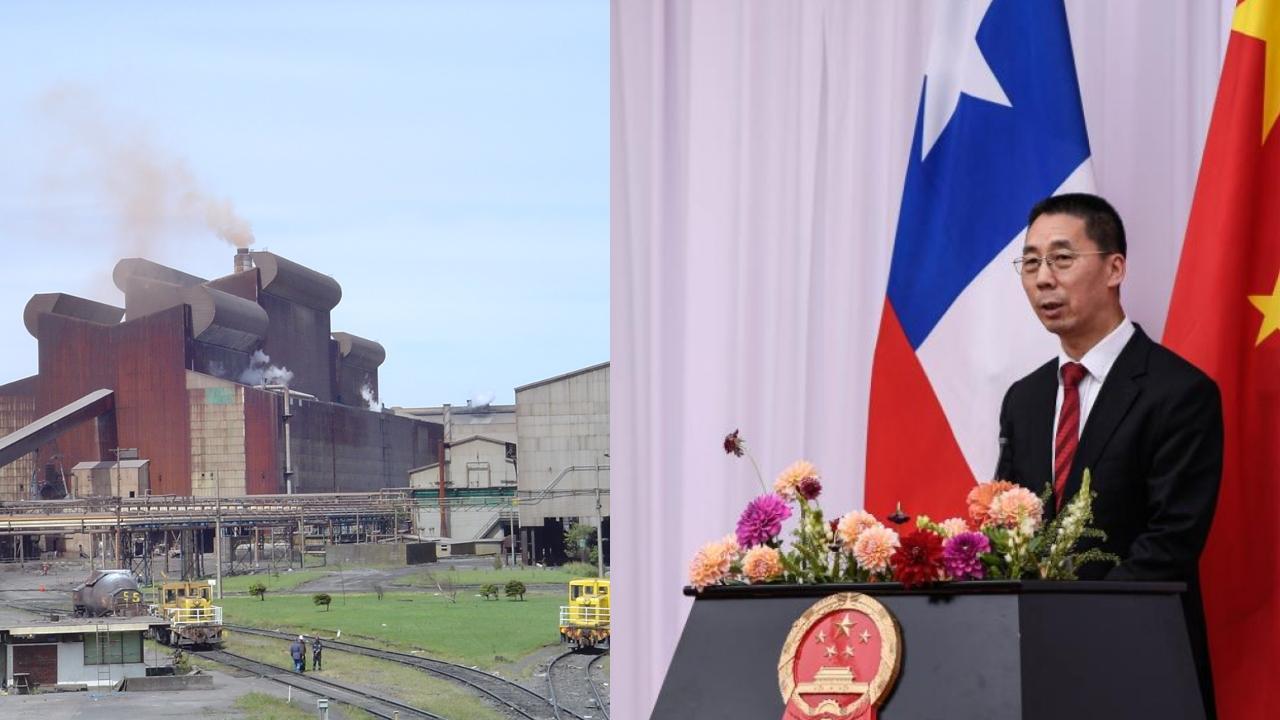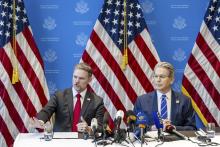
Amid accusations of unfair competition towards China and economic protectionism against the Chilean government, the steel company is now committed to producing green steel in order to get a new opportunity in global trade.
New winds blow in Huachipato. Last Wednesday the 12th, the steel company was one of the signatories of a memorandum of understanding in Germany, in which it committed to accelerate the production of green steel in Chile. That is, a metal that does not involve CO 2 emissions in its creation and a clear allusion to the main competitor of the Chilean industry: China.
As recalled, on March 20, Grupo CAP, the management company of Huachipato, announced the suspension of operations of the steel company. It was a response to alleged unfair competition or dumping from Chinese producers, who exported steel to Chile and other Latin American countries at a low cost. These tariffs placed local steelmakers at a disadvantage and, therefore, decreased profitability.
It is the result of a gradual increase in the Asian giant's steel production: the World Steel Association (WSA) assures that between 2000 and 2023, China increased its steel production by almost 700%. This surprising growth was also manifested in the slice of the pie that Beijing maintained in the world market. Well, we went from producing 15% of global steel to a categorical 54%.
Meanwhile, in the last year, Chinese steel imports into Latin America grew by 45%, achieving a historic increase and a severe impact on the local industry. And if in 2000, the Chinese exported 80,500 tons of steel to the region, by 2023, it will almost reach 10 million tons.
For Ezequiel Tavernelli, executive director of the Latin American Steel Association (Alacero) , it is no coincidence that China is the country with the highest number of antidumping complaints in the world. In fact, in Latin America, of the 60 current complaints, more than 60% are against the eastern power.
“After more than 20 years of joining the World Trade Organization (WTO), China has not fulfilled its commitment to become a market economy. What is even more worrying is that, far from getting closer to a solution, the situation is getting worse. From steel and aluminum to electric vehicles and batteries, China is currently occupying the entire manufacturing spectrum through subsidies, lack of transparency and incentives for state-owned companies,” said Tavernelli for AméricaEconomía . From their perspective, this panorama generates a significant imbalance that seriously affects the competitiveness of the regional industry.
Overproduction fueled by cheap labor is another of the main factors motivating Chinese hegemony in the steel industry. In recent years, the outlook has become increasingly critical in the region, to the point that in Chile, Huachipato recorded losses of US$279 million in the first half of 2023.
THE COMMISSION'S MEASURES
Shortly after, Gabriel Boric's government reacted by imposing a 15.3% tax on imports of Chinese steel balls, but it was not enough. Thus, the suspension of operations was reached as a last alternative. Given the suspension of Huachipato and the imminent loss of jobs, the Anti-Distortion Commission of the Chilean Senate imposed provisional measures to protect national steel.
Thus, on April 21, the parliamentary group established provisional antidumping duties of 24.9% for steel bars and 33.5% for steel balls used in grinding. At the time, Nicolás Grau, Chile's Minister of Economy, applauded the measure. “The commission has recommended values that were in line with what was requested by the Huachipato company,” he declared.
China's response was slow, but when it arrived it was forceful. Beijing's ambassador in Santiago, Niu Qingbao, fired a barb at the Chilean authorities by denying that dumping existed between both countries. Not content with that, Niu declared that the low profitability of Chilean steel was actually due to its low quality. In addition, he declared that the surcharges violated WTO rules by promoting “trade protectionism.”
At the close of this edition, the international organization has not commented on the Huachipato incident. On the other hand, our magazine tried to contact the steel company to find out their point of view on the ambassador's controversial statements, but they refused to participate in this article.
These statements are unusual in a context in which Chile, like other Latin American countries, strives to maintain cordial relations with China for practical purposes.
“In economic terms, it is as strategic a partner as the United States was at one time. To the point that China's weight in the Chilean economy is currently quite strong, because they are our main buyer of copper. For this reason, the country has always tried to have very friendly commercial and political relations. Even when there are presidential elections, no party, whether left or right, usually dares to call China a dictatorship or an undemocratic regime,” explained Esteban Viani, economist and professor at the Autonomous University of Chile .
Despite the voices calling for greater protections for the local industry, among the Chilean authorities, there are those who criticize the surcharges on Chinese steel as a measure that threatens free trade. In fact, the National Economic Prosecutor's Office and the Central Bank of Chile rejected the project.
“I think both institutions are completely correct. It was expected from the Central Bank, because it analyzes the situation from a more technical point of view. But the Prosecutor's Office ensures free competition to avoid monopolies or economic concentration. That they criticized it was quite significant, because it shows that basically there was no argument, beyond the political one, to set tariffs on Chinese steel,” Viani criticizes.
From the economist's perspective, a better outcome would have been for Huachipato to declare bankruptcy and instead of disappearing, undertake a period of restructuring to reduce its costs. At this point, there are two advantages: steel is a massive mineral worldwide and Huachipato operates in an important port like Talcahuano.
This allows the cost of transmitting the product or mineral to the ship to end up being very low, which could reinvent the steel company as a company that exports local steel and processes the Chinese variant. Although another option would be to open a branch in China, taking advantage of the openness to foreign investment and abundant labor.
For his part, Tavernelli believes that if the Boric government does not continue with the surcharges on Asian steel, the future is bleak. To this end, it states that in 2023, steel imports from China to Chile grew by 25%, representing 65% of the South American country's total imports from said market. The director of Alacero considers that this growing prominence of Beijing reflects the difficulties faced by Huachipato and the steel industry in general.
“Huachipato has already spoken out, expressing that, unless conditions are equalized, it is impossible to compete. The company has made an effort to remain competitive, which is essential to maintain the more than 20,000 direct and indirect jobs that Huachipato generates in the BioBío region. Therefore, any measure that goes against the efforts already made will make competition impossible,” warns Tavernelli.
ENVIRONMENTALISM AS A HOOK
If we go back to the day when Huachipato decided to bet on green steel in Germany, we are left wondering if this idea is something concrete or a promise in the air. To begin with, we start from a reality: according to Alacero, each ton of steel produced in China generates on average 25% more CO 2 than that produced in Latin America.
From this scenario, Esteban Viani believes that regional producers should commit to offering steel to “B companies”, those that seek to make a business model profitable, without neglecting their relationship with the environment.
"As all of Latin America or the vast majority of countries have steel or ways of producing it that are much more friendly to nature than China, then we should put together a campaign at a regional level to promote "green steel", taking advantage of already existing alliances such as Mercosur. or the Pacific Alliance,” says Viani.
Likewise, Ezequiel Tavernelli maintains that Latin America should follow initiatives similar to those existing in Europe or the United States, which consist of placing barriers on imports of products with a greater carbon footprint.
“It would be interesting for Latin America to follow a path where local production and intraregional trade are prioritized, which means steel with lower emissions, both in its production and transportation, and greater development of employment and the local economy,” recommends the Alacero representative. So, whatever the decision of the Boric government, Huachipato will have to reinvent itself to survive in a world marked by Chinese hegemony and the growing value of ecological alternatives.









